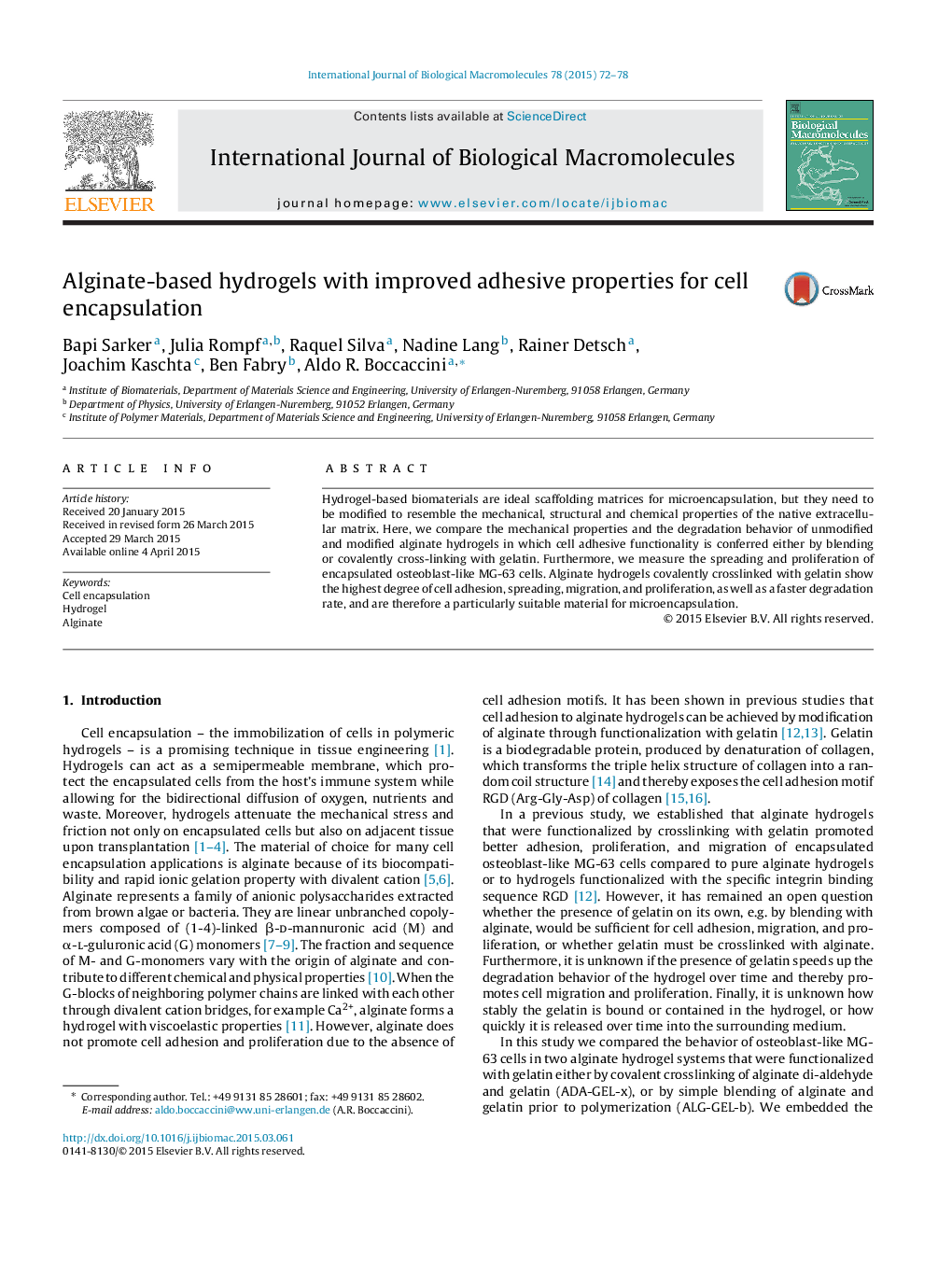| Article ID | Journal | Published Year | Pages | File Type |
|---|---|---|---|---|
| 8331039 | International Journal of Biological Macromolecules | 2015 | 7 Pages |
Abstract
Hydrogel-based biomaterials are ideal scaffolding matrices for microencapsulation, but they need to be modified to resemble the mechanical, structural and chemical properties of the native extracellular matrix. Here, we compare the mechanical properties and the degradation behavior of unmodified and modified alginate hydrogels in which cell adhesive functionality is conferred either by blending or covalently cross-linking with gelatin. Furthermore, we measure the spreading and proliferation of encapsulated osteoblast-like MG-63 cells. Alginate hydrogels covalently crosslinked with gelatin show the highest degree of cell adhesion, spreading, migration, and proliferation, as well as a faster degradation rate, and are therefore a particularly suitable material for microencapsulation.
Keywords
Related Topics
Life Sciences
Biochemistry, Genetics and Molecular Biology
Biochemistry
Authors
Bapi Sarker, Julia Rompf, Raquel Silva, Nadine Lang, Rainer Detsch, Joachim Kaschta, Ben Fabry, Aldo R. Boccaccini,
